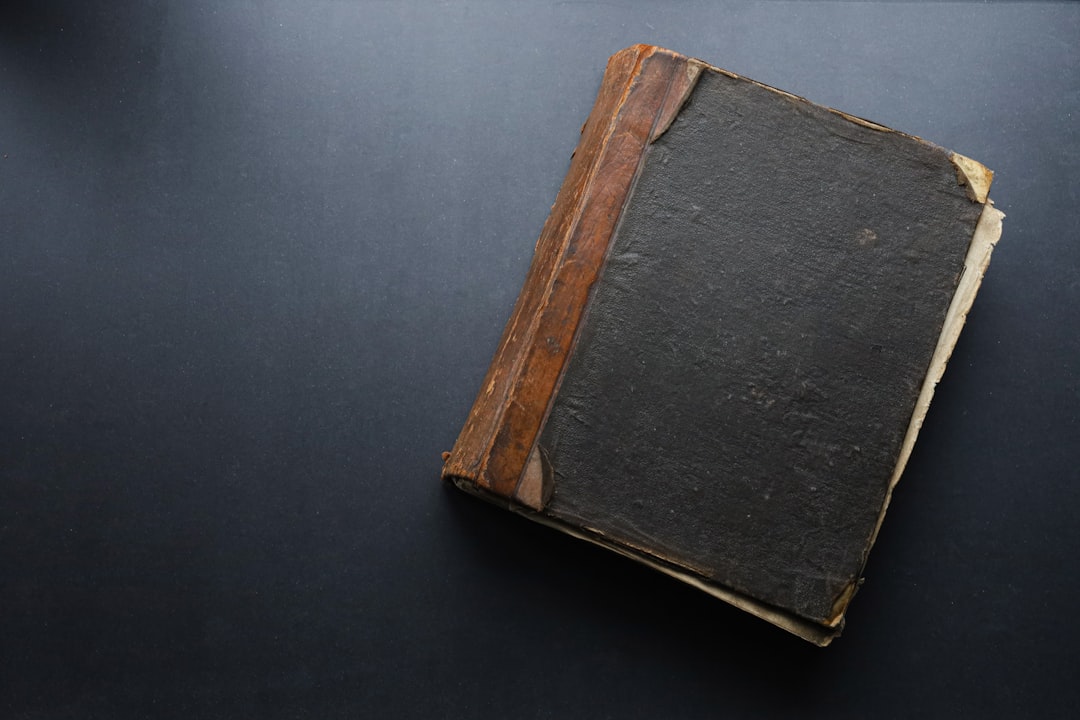For centuries, many have debated whether or not the Bible has been corrupted. Questions of authenticity and accuracy have fueled the study of scripture, leading scholars to examine the historical evidence surrounding its origins. In this article, we will explore the biblical manuscripts and sources, the canonization of the Bible, the history of textual criticism, variants and transmission of the Bible, and debates on biblical accuracy and reliability. Understanding the preservation of the Bible and its impact on Christianity is essential for believers and skeptics alike. Read on to gain a deeper understanding of this fascinating topic.
Biblical Manuscripts and Ancient Sources

When we talk about the Bible, we are referring to one of the most widely read and influential books in the world. However, with over 2000 years of history, many people wonder if the Bible has been corrupted or altered in some way. In this section, we will explore the biblical manuscripts and ancient sources to help you understand the authenticity and accuracy of the Bible.
Here are some important facts you should know:
- The Bible was written over a long period of time, between 1500 BC to 100 AD, by more than 40 authors.
- The Bible was originally written in three languages: Hebrew, Aramaic, and Greek.
- The earliest biblical manuscripts we have today date back to the 2nd century AD.
- There are over 24,000 handwritten copies of the New Testament that have been discovered and studied by scholars.

The most significant source for the textual history of the Bible is the collection of manuscripts that survived from ancient times. These manuscripts have been discovered through archeological excavations and by chance discoveries in monasteries and libraries.
The manuscripts written in Greek are the most important for the New Testament, as it was originally written in Greek. These manuscripts are known as the “uncials” and “minuscules”. The uncials are written in all-capital letters, while the minuscules are written in a cursive script style.
Textual criticism is a method used by biblical scholars to determine the original text of the Bible. By comparing different manuscripts and identifying the variations between them, scholars can create a critical text. Through these critical texts, scholars have identified thousands of differences in the biblical manuscripts, known as “variants”. However, the vast majority of these variations have no significant impact on the meaning of the text.
Furthermore, the canonization of the Bible was a rigorous process that involved many debates and discussions. The early church fathers were careful to select only those books that were considered inspired and authoritative. These books were then recognized as the official canon of the New and Old Testaments.
In conclusion, the ancient biblical manuscripts and sources allow us to examine the historical accuracy and authenticity of the Bible. The textual criticism by biblical scholars has helped us understand the small variations and differences in the biblical manuscripts. The canonization of the Bible helps us understand how the books of the Bible were selected and recognized as authoritative. Overall, it is clear that the Bible has been well-preserved and accurately transmitted through history.
The Canonization of the Bible
The Bible is a religious document that has been the center of historical and theological debates for centuries, and yet it remains a central text for the Christian faith. The process of selecting and sorting the books that would form the Bible was called the canonization, which was a process that took many decades, if not centuries, to complete.
The canonization of the Bible began in the early centuries of Christianity, shortly after Jesus’ death and resurrection. Early Christian communities had a collection of texts that they revered and used in their religious services, including Old and New Testament texts that would eventually become part of the Bible.
As Christianity grew, so did the number of texts that were used in worship. Over time, these texts were evaluated and discussed by religious leaders, who had to determine which texts were legitimate and which were not. At one point, over twenty different texts told different versions of the gospel story until it came down to the four gospels that Christians now know and follow.
One of the main criteria for the inclusion of texts in the canon was their association with apostles or other Christian leaders of the early church. The texts also had to be consistent with Christian doctrine and teachings. These criteria, along with other factors, led to the acceptance of some texts and the rejection of others.

Another important factor in the canonization process was the threat of heresy and the need for orthodoxy. Early Christian communities had to select texts that reflected their beliefs and that would protect them from heretical movements. This led to the eventual exclusion of some texts known as apocryphal books.
It is important to note that the process of canonization was not a single event but a series of events that went on for centuries. The final list of texts that were included in the canon was not formally recognized by the church until well into the fourth century.
The canonization process was not only important for identifying the books of the Bible, but it also served to create a sense of unity among early Christian communities. It allowed them to develop a common understanding of their faith, with a shared religious text that conveyed their beliefs and practices.
The canonization of the Bible remains a critical aspect of Christianity, as it serves as a foundation of faith for believers. It provides a means for Christians to learn and grow in their faith, to understand their history, and to reflect on God’s love and plan for the world.
History of Textual Criticism
When it comes to the Bible, people often wonder about its accuracy and reliability. One way scholars have attempted to ensure the authenticity of the Bible is through textual criticism. [Textual criticism] is the study of ancient manuscripts to evaluate the accuracy of text that has been transmitted over time.
Here are some key points to know about the history of textual criticism:
- Textual criticism began in the third century BCE in Alexandria, Egypt, where scholars examined different manuscripts to create a more accurate version of the Old Testament.
- The first significant attempt to gather all the texts of the New Testament into a single collection was undertaken by Eusebius in the fourth century CE.
- Over the centuries, scribes made errors when copying the texts, leading to discrepancies and variations in manuscripts. Some of these errors are minor, such as spelling mistakes, while others are more significant, such as an entire sentence or verse being omitted.
- In the 16th century, the invention of the printing press led to a greater standardization of the text.
- The discovery of ancient manuscripts, such as the Dead Sea Scrolls and Codex Sinaiticus, has provided scholars with a greater understanding of the early biblical texts and helped to resolve some of the variant readings.
- Scholars have also used external evidence, such as early church writings, to evaluate the accuracy of the text.
« Exploring the Nature of Subjective Truth and Its Implications.
Understanding Biblical Christianity: A Comprehensive Guide. »
Textual criticism has been a valuable tool in preserving the accuracy of the Bible over time. It has allowed scholars to identify errors and variations in manuscripts and work towards creating a more accurate text. However, this does not mean that the Bible is completely error-free. Some variant readings still exist, and scholars continue to debate the historical accuracy of the text.
As a Christian, it is important to understand the role textual criticism plays in ensuring the accuracy of the Bible. However, it is also important to have faith in the divine inspiration of the text and understand that the Bible is more than just a historical document. It is a guide to understanding God’s word and living a meaningful life.
Variants and Transmission of the Bible
As one of the most collected and revered texts in history, the Bible has faced various debates and controversies in relation to its accuracy and reliability. With numerous translations and versions available, there has been widespread curiosity about how the original Bible text has been preserved. The study of textual variants and transmission of the Bible is particularly important because it can help us understand how the Bible has been handed down to us.
For those seeking to learn about the Bible, it is important to note that textual variants do not necessarily point to scriptural errors. Rather, they refer to slight differences in the wording of the text when comparing ancient manuscripts. These variations could be spelling mistakes, grammatical errors or even intentional changes, but do not significantly alter the meaning of the text. The fact that the Bible has been transmitted accurately for thousands of years is a testament to how scripture has been preserved over time.

When it comes to transmission of the Bible, it is important to note that the original documents no longer exist. Instead, we have copies of copies of copies of the original manuscripts. This is where the field of textual criticism comes in, which refers to the study of ancient manuscripts to determine the most accurate rendition of the Bible. The development of textual criticism has been significant in helping scholars to determine which variants are authentic.
There are also debates on the accuracy of certain verses in the Bible due to the fact that there are textual variants. However, it is important to know that while some variants exist, they do not significantly affect the overall message of the biblical text. In addition, most ancient manuscripts agree with one another, bringing some level of consistency to the text.
In conclusion, while textual variants and transmission have challenged the authenticity of the Bible, the evidence supports the argument that the Bible has been preserved accurately. Textual criticism has allowed scholars to determine which variants are authentic, while the widespread availability of many ancient manuscripts have confirmed that the majority of the text appears to be highly consistent. The preservation of the Bible is essential in understanding the roots of Christianity and providing its followers with an unwavering foundation.
Debates on Biblical Accuracy and Reliability
When it comes to the Bible, one of the most debated topics is its accuracy and reliability. Some people question the authenticity of the Bible, while others have complete faith in its divine inspiration and inerrancy. Here, we will explore some key points on this subject.
-
Textual Variants: Throughout the years, there have been some differences found in the various manuscripts of the Bible. These differences are known as “textual variants”. While some variants may seem concerning, it’s important to note that many are minor and do not change the fundamental message of the text. Scholars have been studying and comparing biblical manuscripts for years, which has led to the development of textual criticism, a study of the variations in the various texts. By using different methods, scholars are able to determine the most likely original wording of a specific text.
-
Accuracy of Translation: The Bible has been translated into many different languages over the years. While translators do their best to convey the original meaning of the text, some nuances can be lost in translation. This is why many Christians look to the original language of the Bible, such as Hebrew and Greek, to get a deeper understanding of certain texts.
-
Historical and Archaeological Evidence: Despite debates about its reliability, many historical and archaeological findings have supported the Bible’s accuracy. Numerous biblical events have been confirmed through archaeological discoveries, such as the existence of King David and the accuracy of certain geographical locations mentioned in the Bible.
-
Preservation of the Bible: Despite attempts to destroy or alter the Bible throughout history, it has been preserved and passed down through countless generations. This preservation has been attributed to the care and reverence of those who have handled it, as well as the divine guidance of God.

Overall, while there may be debates on the accuracy and reliability of the Bible, there is strong evidence to suggest that it is indeed a reliable and authentic text. The Bible has withstood the test of time and continues to inspire and guide millions of people around the world.
Preservation of the Bible and Its Impact on Christianity
Throughout history, the Bible has faced numerous challenges and criticisms from skeptics and non-believers who question its authenticity, accuracy, and reliability. However, despite these obstacles, the Bible remains one of the most widely read and studied religious texts in the world today.
One of the key factors that have contributed to the continued preservation of the Bible is the dedication and efforts of biblical scholars and historians over the years. These individuals have worked tirelessly to collect and translate the numerous ancient manuscripts and sources that make up the Bible, helping to ensure that its teachings and message are accurately preserved for future generations.
Perhaps one of the most significant aspects of the Bible’s preservation is the role that it has played in shaping and influencing Christian theology and beliefs over the centuries. Through its teachings, the Bible has helped to shape the moral and spiritual beliefs of countless individuals, inspiring them to live their lives according to its message of hope, love, and redemption.
Additionally, the preservation of the Bible has also had a significant impact on the history of Christianity as a whole. From the debates among early church leaders over which books should be included in the canon to the countless translations and interpretations of its message across cultures and languages, the Bible has been at the heart of many of the most important developments and movements within Christianity.

Despite its impact and significance, however, the preservation of the Bible is not without controversy and debate. Some scholars and critics have argued that certain books or texts have been left out of the canon, while others have raised concerns about the accuracy of certain translations or interpretations.
Regardless of these debates and controversies, however, the preservation of the Bible remains one of the most remarkable achievements in human history. Its survival and continued relevance today are a testament to the dedication and commitment of those who have worked to ensure that its message and teachings are preserved for future generations.












